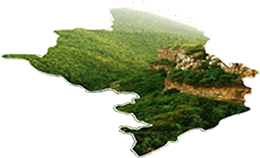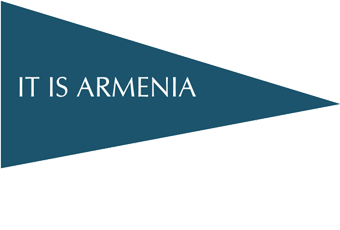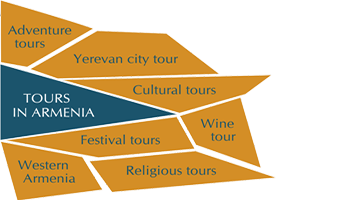
Artsakh Republic ....
Artsakh Republic is actually unrecognized but an independent Armenian Republic in the southern part of the Caucasus, to the southeast from the Republic of Armenia. AR is borders with Armenia in the west, Azerbaijan in the north and east and Iran in the south. The capital of Artsakh is Stepanakert, the number of residents of which is 50 thousand people. The AR proclaimed its independence September 2, 1991. The AR territory is about 11,500 square kilometers. Geographically it is divided into eight administrative-territorial districts. And all the districts are divided into 242 communities. According to the 2010, the population of the AR amounted 141 thousands. 98 per cent of the population living there are Armenians. Russian, Greeks, Ukrainians, Georgians are the national minorities. Artsakh was a part of Armenia since the ancient times. It is a country (region) Artsakh of historical Armenia (Greater Armenia). It was an integral part of Armenian Kingdoms of the Middle Ages. In the 17th century, when there was no statehood in other regions of Armenia, Artsakh had partially dependent government. This military alliance called the principalities of Khamse (the Five Melikdoms of Karabakh) and consisted of five separate principalities. Artsakh was also part of the First Republic of Armenia in 1918-1920. In 1921, the Russian SFSR annexed Artsakh to Azerbaijan SSR. In 1988, the Armenians of Artsakh began liberation movement aimed at reuniting with their motherland, the Armenian SSR. That met the resistance of the Governments of Azerbaijan and the USSR. Azerbaijan started the war in Artsakh, as it had an ally like the Soviet army. In the initial stage of the war, the Azerbaijani army (80 thousand) captured part of Artsakh and destroyed thousands of residents or expelled from their native country. But the army of Artsakh (25 thousand) gathered and expelled Azerbaijani forces from Artsakh and liberated several areas of historical Artsakh. In 1994, at the instance of defeated Azerbaijan, was concluded the armistice, which has so far been maintained. The whole territory of Artsakh is divided by mountain ranges: Mrav ridge, Gegharkhunik ridge, Syunik Plateau, Karabakh Range ... that are divided into branches of the ridge. Almost 40 percent of the territory is wooded. It has rich flora and fauna. Bear, wolf, panther, lynx and other animals can be found here in the forests. The climate in Artsakh is mild subtropical. The average annual temperature is 11 ° C. The hottest and sunniest months are July and August, when the average temperature is +22°C and +21°C. In winters, the average temperature fluctuates from -1°C to 0°C. In winter months relatively cold and snowy zone covers the highlands. The lowest temperature drops to -23°C. In summer the highest temperature in the lowland and foothill areas reaches 40 ° C, middle and mountainous areas - from 32 ° C to + 37 ° C. The average annual rainfall in the mid-mountain and mountain areas 560-840mm, and in low-lying foothill areas - 410-480 mm. In spring, especially in May, there are often pelting rains and hails. Besides, there is fog about 100-125 days a year in mid-mountain and mountainous areas. The bowels of Artsakh are rich in minerals. Mining polymetallic mines is of particular importance for the economy, which has been the main branch of the economy of Artsakh for the recent years. The agriculture is developed: crop area of crops, horticulture, fruit growing, cattle breeding... The only road connecting Artsakh with the external world passes through Armenia. The new modern airport in Stepanakert is now ready to be used. The citizens of Armenia and the countries of CIS can come to the AR without a visa and passing permits. Citizens of other countries can get a pass at the offices of The AR, as well as on the border of Artsakh.














